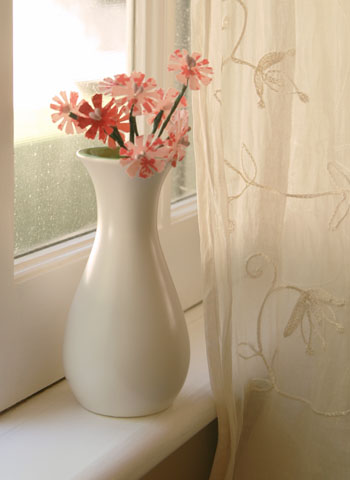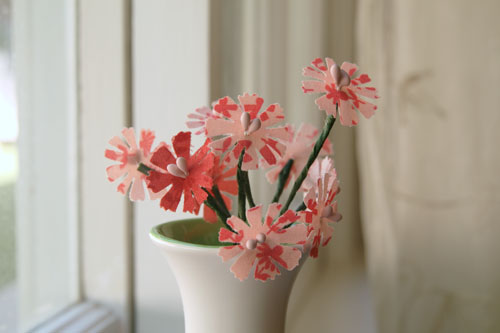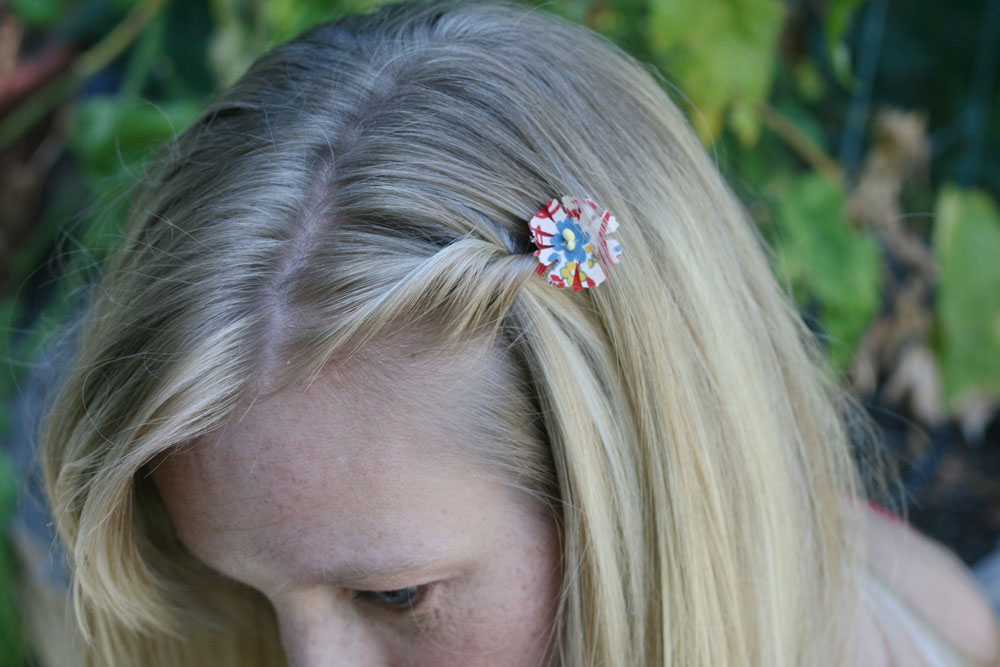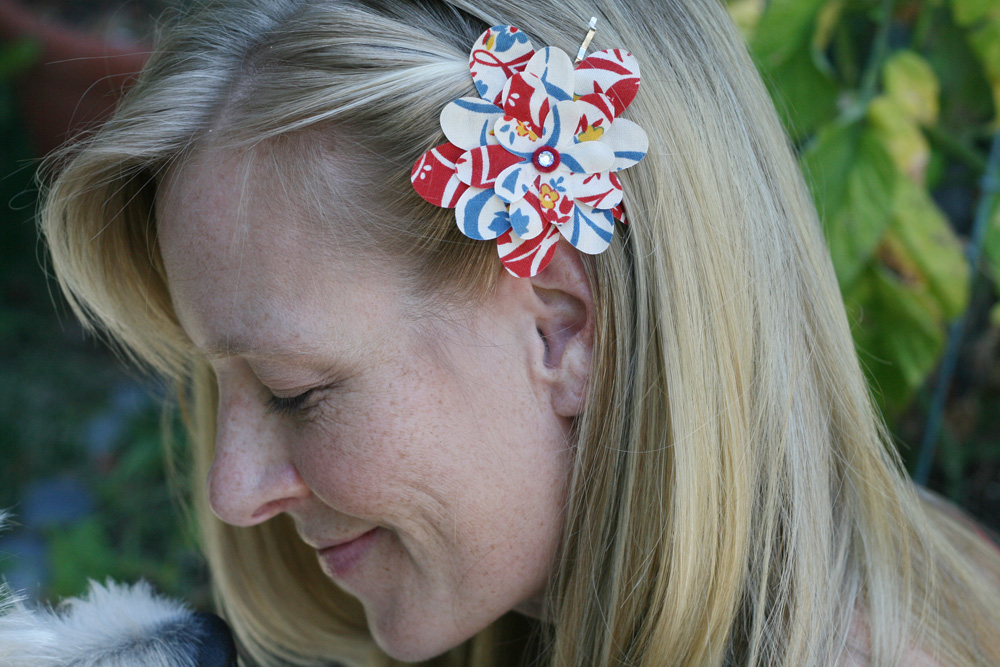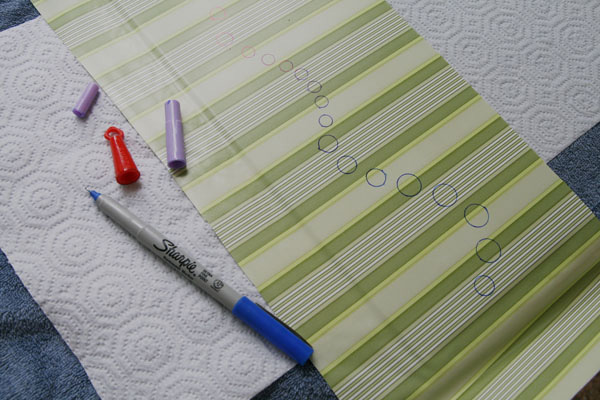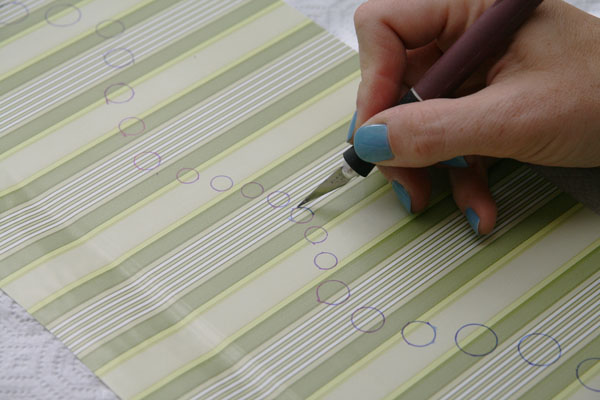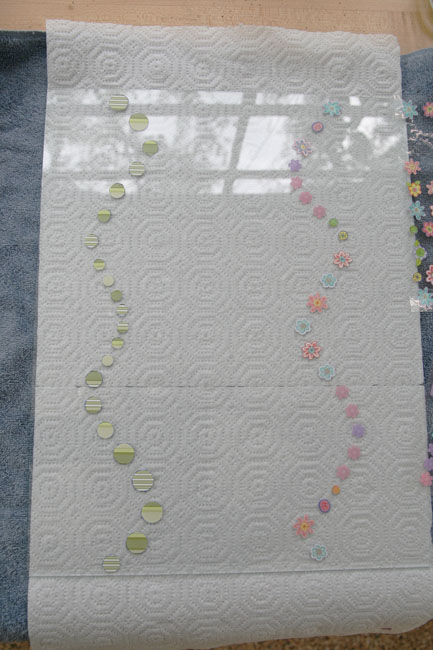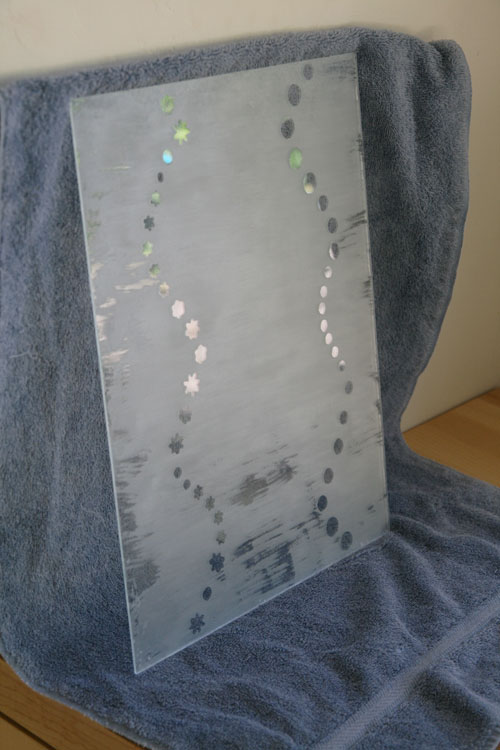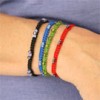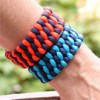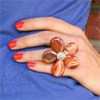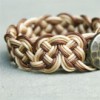We now move from etching to fabric flowers, which are much, much less dangerous.
But definitely more frustrating.
You’d think this would be an easy craft. Cut flowers out of fabric. Seems so easy, doesn’t it? Ah, Martha, you deceive me with your simple-looking projects.
All you have to do here is find some fabric, and preferably thin fabric. Martha calls this “thin shirting” or “Indian cotton.” Now, we all know what happened last time I went looking for a very specific fabric, so I figured I’d take it easy and buy some pretty fabric that was reasonably thin. I found some “charm packs,” which are stacks of 5″ x 5″ pieces of coordinating fabric (usually used in quilt making), and they were super cute patterns, so I bought two. And, I mean, it wasn’t netting or anything, but I figured it was thin.
Next, you take your fabric and coat it with fabric stiffener. No big whoop. I did that and let it dry.
Then, you take your stiffened fabric and you punch it with a flower-shaped punch.
Oh, ho, ho, not so fast, sister.
I had quite a few of Martha’s OWN punches to use in various flower shapes. And you know what? They wouldn’t punch through that freaking fabric for anything. You should’ve seen me, squeezing the living daylights out of those punches, in vain, people, in vain. Then, one would punch kind of halfway through a piece of fabric, and then it would get stuck, since the punched part wouldn’t come out, being, you see, still attached to the sheet of fabric, but it was also all tangled up in the punch itself, so then I had punches I could not remove from the fabric.
I tell ya, I was about ready to burn the Martha Stewart Encyclopedia of Crafts.
I do not know if this is some kind of problem with the thickness of my fabric, but it was thin! It really was! Finally, finally, I used a few older punches I had and eked out a few flowers. Then, I sharpened one of the Martha ones by punching aluminum foil a few times, and I squeezed out a few more. And then, do you know what I did? I piled the four year old into the car and dragged him to Michaels to buy another Martha punch.
Why? Well, there are about forty-seven different flower punch projects in this book, and while I could’ve used my die cut machine to cut the fabric, I just figured I shouldn’t have to. And many people possibly attempting this craft likely won’t have a die cutting machine, so that isn’t really fair. I should be able to do this project with the materials the Encyclopedia lists.
So I decided to give it a fair go and buy a brand new Martha punch and see if it made a difference. And, well, it kinda did, but not that great of a difference. It was still a bloody bitch to punch out those flowers.
Another side issue here is that the fabric gets awfully wrinkly when it dries. I don’t imagine you can really iron it with that stiffener in it, so, not sure what to do about it. It didn’t really matter for this project that required only small punched flowers.
So what is this amazing, fantastic project that necessitates such feats of punching prowess?
I give you: Blooming Branches.
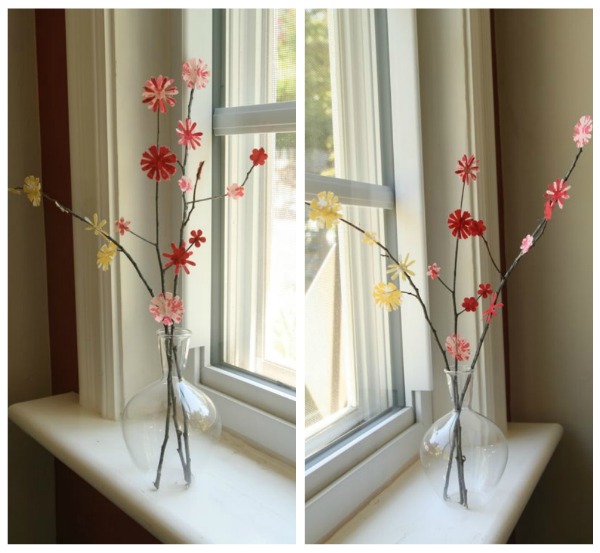 Oh yes, people, THIS IS IT.
Oh yes, people, THIS IS IT.
Yup. Spend your energy and frustrations punching out fabric flowers, then hot glue them to a few branches you found in the back yard. I kid you not.
These look redonk, don’t you think? I mean, in a bad way, not in the CuteOverload kind of way. Yes, it might have looked more natural had I used all the same shape flower, I agree. Are you judging me? Don’t judge me.
Oh yeah, and maybe the same color.
But even, EVEN if I made them look all snazzy like Martha’s, which by the way requires three shades of pink fabric and three different sized punches of the same shaped flower, why would I do this?
TIME INVESTED
About 3 hours (1 hour drying time)
DIFFICULTY
Moderate, unless you have really bad punches, and then it’s epic.
TOTAL COST
- fabric charm pack, $9.99
- fabric stiffener, $5.00
- Martha Stewart flower punch, $9.99 (that’s just for ONE!)
Total cost = $24.98
WAS IT WORTH IT?
As far as I can remember, this is the single worst project in the book. So far. Is there really a need for a custom branch of fabric flowers? If you want something like this in your home, you really can’t find anything at Crate and Barrel or Pottery Barn or Pier One or Ikea? I can’t imagine any reason why you would want to make this project. Period.
That’s partially because I’m still annoyed with the punch fiasco, but really, Martha. Really!?!





